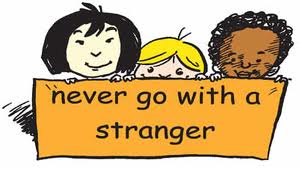Dani Robbins is the Founder & Principal Strategist at Non Profit Evolution located in Columbus, Ohio. I’ve invited my good friend and fellow non-profit consultant to the first Wednesday of each month about board development related topics. Dani also recently co-authored a book titled “Innovative Leadership Workbook for Nonprofit Executives” that you can find on Amazon.com.
 Every time I speak on issues related to nonprofits, and I mean every single time, regardless of the topic, someone, usually a Board member or an Executive Director, asks “What is the role of the Board?” It has happened so often, and so consistently, that I don’t even wait for the question anymore, I just include the information. Then, of course, the question that follows or should follow is “What is the role of the Executive Director?”
Every time I speak on issues related to nonprofits, and I mean every single time, regardless of the topic, someone, usually a Board member or an Executive Director, asks “What is the role of the Board?” It has happened so often, and so consistently, that I don’t even wait for the question anymore, I just include the information. Then, of course, the question that follows or should follow is “What is the role of the Executive Director?”
The Board is responsible for governance, which includes:
- mission, vision and strategic planning;
- hiring, supporting and evaluating the executive director;
- acting as the fiduciary responsible agent;
- setting policy; and,
- raising money.
Everything (Yes, I really mean everything) else is done in concert with the executive director or by the executive director.
What does that really mean?
It means the Board sets the direction, often with input from the executive director, and the executive director makes it happen, often with support from the Board.
It means the Board hires, supports, evaluates and (when necessary) fires the executive director. Likewise, the executive director hires, supports, evaluates and (when necessary) fires the staff. For Board members, that means that you work through the executive director if you have a problem or need something from the staff. For the executive director (even though they don’t need permission) having input from the Board before firing a staff member (especially one that is well known) will help build organizational cohesiveness and extend career longevity.
 Fiduciary responsibility means that the Board (and not just the Treasurer but the whole Board) is responsible for safeguarding the community’s resources and ensuring accountability and transparency. The Board also must understand and formally approve finances, audits, and the 990. Fiduciary responsibility doesn’t end with finances; it also includes programs. Boards are entrusted to understand how and why an organization’s programs fill a need in the community, the numbers of people who participate in those programs and their impact, as well as how those programs connect to mission.
Fiduciary responsibility means that the Board (and not just the Treasurer but the whole Board) is responsible for safeguarding the community’s resources and ensuring accountability and transparency. The Board also must understand and formally approve finances, audits, and the 990. Fiduciary responsibility doesn’t end with finances; it also includes programs. Boards are entrusted to understand how and why an organization’s programs fill a need in the community, the numbers of people who participate in those programs and their impact, as well as how those programs connect to mission.
Setting policy is also the role of the Board. Policies are usually recommended, written and, later, implemented by the executive director, but they are voted upon and passed by the Board. Typical policies include personnel, code of ethics/conflict of interests, whistle blower, confidentiality, crisis management and/or communication. Your agency should, and does, also have by-laws (also called codes of regulations) which should be followed, periodically reviewed and if revised, voted upon by the Board.
The last piece of Board responsibility is fundraising. The executive director cannot raise money alone. The Development Director cannot raise money alone. The Board cannot raise money alone. Fundraising works best in a culture of philanthropy when both the staff and the Board are working together. The Board’s role is to set the fundraising goal, embark on the campaign, open doors, introduce staff, “make the ask” when appropriate, pick up the tab for lunch when possible, and thank the donor. The staff is responsible for training the Board, coordinating the assignments, preparing the askers with relevant donor information, drafting and supplying whatever written information will be left with the donor, including a letter asking for a specific dollar amount, attending the meetings as necessary and documenting the meeting in the database as well as writing the formal thank you note, and then creating a plan to steward the donor.
 There is also a strategic and generative piece to Board service (or at least there should be). We have already reviewed strategic planning in previous posts, and I encourage you to now expand that to include strategic thinking. Is it not enough to have a strategic plan that made your Board members crazy and now sits on a shelf. Strategy is not a one day thing. Strategy requires direction setting, questioning and the committing of resources to ensure the destination is reached. It also requires the rejection of things that are outside the scope of our plan, or the revision of our plan. It necessitates having a culture that allows for and encourages questioning, and sometimes dissent. Board meetings should include robust discussions.
There is also a strategic and generative piece to Board service (or at least there should be). We have already reviewed strategic planning in previous posts, and I encourage you to now expand that to include strategic thinking. Is it not enough to have a strategic plan that made your Board members crazy and now sits on a shelf. Strategy is not a one day thing. Strategy requires direction setting, questioning and the committing of resources to ensure the destination is reached. It also requires the rejection of things that are outside the scope of our plan, or the revision of our plan. It necessitates having a culture that allows for and encourages questioning, and sometimes dissent. Board meetings should include robust discussions.
Finally, and least often, there is what Richard Chait describes as generative mode. Generative is a much deeper conversation about the underlying issues and how to impact them. Chait presents generative discussions as ones that “select and frame the problem.” He says “committees need to think not about decisions or reports as their work product, but to think of understanding, insight and illumination as their work products.”
Honestly, if Boards are just going to approve the things put in front of them, anyone can do that. We don’t need our community’s best and brightest to serve on our Boards for that. We do need our community’s best and brightest to lead, to govern and to be strategic about the needs of our communities and generative about the issues we face.





















